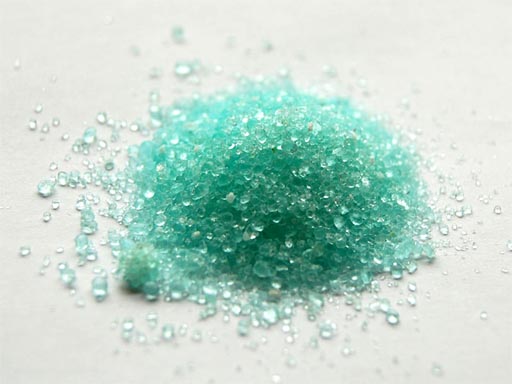Properties of Sulfur
- Yellow solid at room temperature
- Second only to carbon, sulfur is found in large number of allotropes (various forms). For examples: disulfur (S2), trisulfur (S3), tetrasulfur (S4), cyclo-pentagon (cyclo-S5), and so-on.
Here are the common sulfur allotrope:
 |
| Rhombic sulfur |
 |
| Monoclinic sulfur |
 |
| Powder |
- Sulfur reacts with metal to form metal sulfide (sulphide)
mg(s) + S(s) ---> MgS(s)
magnesium + sulfur ---> magnesium sulfide
Zn(s) + S(s) ---> ZnS(s)
zinc + sulfur ---> zinc sulfide
- Sulfur reacts with oxygen to produce sulfur dioxide
S(s) + O2 (g) ---> SO2 (g)
- Sulfur is a non-metallic element, does not conduct electricity and insoluble in water
- Sulfur atomic number = 16
Sources of Sulfur
Sulfur may be obtained from the following sources:
- Copper pyrite (CuFeS2)
- Zinc blend (ZnS) is heated in air (to produce zinc oxide and sulfur dioxide)
- Fossil fuel/ natural gas and oil/petroleum
- Sulfur ore (sulfide/sulphide) from volcanic activity
- Elemental sulfur from sulfur beds in Poland, Russia and US (Louisiana)
 |
| Recovery sulfur from refinery of petroleum/natural gas using Claus process |
 |
| Mining sulfur ore from active volcano area |
 |
| Sulfur minor carrying sulfur ore |
Uses of Sulfur
Sulfur is very important in the chemical industry as the following:
- to produce sulfuric acid
- millions of tonnes of sulfuric acid are produced worldwide every year.
- sulfuric acid is used to make chemicals, paints & pigments, detergents, soaps, synthetic fibres, dyes, metal salts, fertilisers, and so-on.
- to vulcanise rubber, a process which makes the rubber harder and increases its elasticity.
- in manufacture of matches, fireworks and fungicides
- as a sterilising agent in medicines
- to produce bleaching agent (sulfur dioxide gas) for paper manufacture
- to produce food preservative (sulfur dioxide gas) by killing bacteria ( also called fumigation; to exterminate pests or disinfect)
The standard method to control postharvest decay of grapes is to fumigate with sulphur dioxide gas the fruit immediately after harvest and during storage. However, the concentration of sulphur dioxide necessary to inhibit fungal infections may induce injuries in both rachis and berries, in addition sulphur dioxide application has been restricted in many Countries for the human health risks due to the sulphite residues. Several studies have shown the efficacy of heat treatments on harvested fruits to control biological agents, delay ripening and preserve quality of fresh-cut table grapes.
(source:http://www.freshplaza.com/article/97631/How-to-preserve-the-quality-of-ready-to-eat-grapes#SlideFrame_1)












